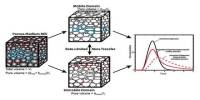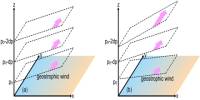The fluorescence of single silicon is not a common phenomenon. Fluorescence is a process in which a material absorbs light at a specific wavelength and then re-emits it at a longer wavelength, typically in the visible range. However, silicon, in its pure crystalline form, does not exhibit fluorescence.
Researchers from the University of Science and Technology of China of the Chinese Academy of Sciences achieved advancements in improving the fluorescence of single silicon carbide spin defects in a work that was published online in Nano Letters. The team was led by Prof. Li Chuanfeng and Dr. Xu Jinshi.
The fluorescence brightness of single silicon carbide double vacancy PL6 color centers was significantly increased by the researchers employing surface plasmons, which increased the effectiveness of spin control using co-planar waveguide features. This low-cost solution does not compromise the coherence characteristics of the color centers or require sophisticated micro-nano processing technology.
Solid-state systems with spin color centers are essential for processing quantum information, and the intensity of their fluorescence is a key variable for real-world quantum applications.
Traditionally, coupling spin color centers with solid-state micro-nanostructures has been used to increase their fluorescence. This approach is used to create solid immersion lenses, nanopillars, bull’s-eye structures, photonic crystal microcavities, and fiber cavities, among other structures.
Even so, difficulties persist, including the inability to precisely align certain color centers with micro-nano structures and the vulnerability of color center spin characteristics to difficult micro-nano manufacturing procedures.
The researchers invented a novel technique to boost the fluorescence of spin centers in silicon carbide by using plasmons. Through chemical and mechanical polishing, the researchers created a silicon carbide thin coating with a thickness of roughly 10 micrometers. They fabricated near-surface divacancy color centers in the film using ion implantation technology.
The film was flipped and adhered to a silicon wafer coated with a coplanar gold waveguide, utilizing van der Waals forces. Due to this placement, the gold waveguide’s surface plasmons were able to interact with the near-surface color centers, boosting their fluorescence.
With an objective lens (with a numerical aperture of 0.85) and the enhancement effect of surface plasmons, the researchers achieved a seven-fold enhancement of the brightness of a single PL6 color center. The fluorescence of the color center topped one million counts per second with an oil lens having a numerical aperture of 1.3.
In addition, the researchers were able to analyze the ideal operating range by accurately controlling the distance between the near-surface color center and the coplanar waveguide by varying the film thickness with a reactive ion etching procedure. The coplanar gold waveguide may effectively radiate microwaves in addition to producing surface plasmons, greatly enhancing the effectiveness of spin control.
In comparison to conventional microwave radiation approaches, the coplanar waveguide enhanced the Rabi frequency of a single PL6 color center by 14 times at the same microwave power.
Moreover, the researchers investigated the mechanism of fluorescence enhancement. They established that surface plasmons increased the fluorescence brightness by raising the radiative transition rate of the color center energy level by fitting the autocorrelation function using a three-level model and observing the non-resonant excitation fluorescence lifespan.
They also discovered that the quenching effect of surface plasmons led to a decline in the fluorescence brightness of the color center as the interaction distance shrank.
The plasmon-enhanced fluorescence from near-surface spin color centers in silicon carbide films is being used for the first time in this work. The coplanar gold waveguide is easily manufactured without complicated alignment procedures or enhancement mechanisms.
By enhancing the fluorescence of additional spin color centers in silicon carbide, this technique advances the use of silicon carbide materials in quantum research.















